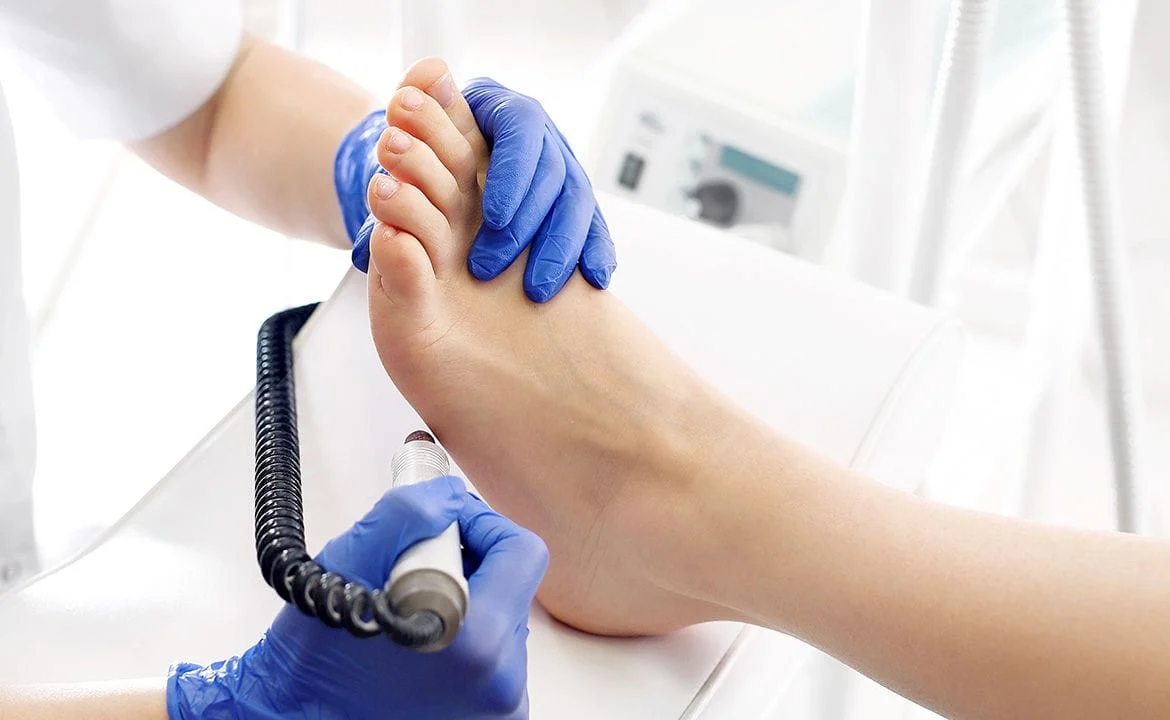Clubfoot (congenital talipes equinovarus) is a deformity that is present at birth in about one in every 1,000 children. It occurs in males more often than females, and can affect one or both feet. The feet of an infant with clubfoot point down and inward. It is not painful, but must be corrected to
Read more-
Clubfoot
Category: Bone/Joint/Tendon
-
Cold Feet
Category: Bone/Joint/Tendon
Cold feet are most commonly a result of medical conditions that cause poor blood flow in the legs or feet, such as peripheral vascular disease (PVD), a blockage or narrowing of the arteries, Raynauds’s phenomenon (cold sensitivity which causes a spasm of the blood vessels), and heart disease. Some
Read more -
Common Disorders of the Achilles Tendon
Category: Bone/Joint/Tendon
What Is the Achilles Tendon? A tendon is a band of tissue that connects a muscle to a bone. The Achilles tendon runs down the back of the lower leg and connects the calf muscle to the heel bone. Also called the “heel cord,” the Achilles tendon facilitates walking by helping to raise the heel off
Read more -
DVT (Deep Vein Thrombosis)
Category: Bone/Joint/Tendon
What is Deep Vein Thrombosis? The blood supply of the leg is transported by arteries and veins. The arteries carry blood from the heart to the limbs; veins carry blood back to the heart. The leg contains superficial veins, which are close to the surface, and deep veins, which lie much deeper in the
Read more -
Drop Foot
Category: Bone/Joint/Tendon
“Drop foot” refers to the inability to lift the front part of one’s foot off the ground when walking, resulting in a scuffing or dragging of the foot or lifting the thigh (known as “steppage” gait). It is most often caused by nerve or muscle disorders or damage, or by a central nervous system
Read more -
Extra Bones
Category: Bone/Joint/Tendon
There are 26 bones in the human foot. Some people have “extra bones” (accessory ossicles) which are usually congenital (present at birth) but may also be due to previous trauma. These extra bones, which can occur with any bone in the foot, can be painless (asymptomatic) and are only noticed when
Read more -
Fallen Arches
Category: Bone/Joint/Tendon
"Fallen arches" is a common term used to describe a flatfoot condition that develops during adulthood. This should not be confused with other causes of flatfoot that may develop during childhood or adolescence. Most cases of “fallen arches” develop when the main arch-supporting tendon (the posterior
Read more -
Fifth Metatarsal Fracture
Category: Bone/Joint/Tendon
What is a Fifth Metatarsal Fracture? Fractures (breaks) are common in the fifth metatarsal – the long bone on the outside of the foot that connects to the little toe. Two types of fractures that often occur in the fifth metatarsal are: Avulsion fracture. In an avulsion fracture, a small piece
Read more -
Foot Arthritis
Category: Bone/Joint/Tendon
Arthritis is a general term for a group of more than 100 diseases. “Arthritis” means “joint inflammation.” When it affects joints of the foot it can produce swelling and pain, and may eventually result in deformity, loss of joint function, and decreased ability to walk. The most common form
Read more -
Foot Drop
Category: Bone/Joint/Tendon
"Foot drop” refers to the inability to lift the front part of one’s foot off the ground when walking, resulting in a scuffing or dragging of the foot or lifting the thigh (known as “steppage” gait). It is most often caused by nerve or muscle disorders or damage, or by a central nervous system
Read more -
Gangrene
Category: Bone/Joint/Tendon
Gangrene occurs when there is a lack of blood supply to tissue, depriving it of oxygen, and thereby causing death and decay of the tissue. The two types of gangrene are wet (caused by bacterial infection) and dry (no infection). Most common causes of gangrene are diabetes, arteriosclerosis, tobacco abuse,
Read more -
Gout
Category: Bone/Joint/Tendon
What Is Gout? Gout is a disorder that results from the build-up of uric acid in the tissues or a joint. It most often affects the joint of the big toe. Causes Gout attacks are caused by deposits of crystallized uric acid in the joint. Uric acid is present in the blood and eliminated in the urine,
Read more -
Haglund's Deformity
Category: Bone/Joint/Tendon
What Is Haglund's Deformity? Haglund’s deformity is a bony enlargement on the back of the heel. The soft tissue near the Achilles tendon becomes irritated when the bony enlargement rubs against shoes. This often leads to painful bursitis, which is an inflammation of the bursa (a fluid-filled sac
Read more -
Hallux Rigidus
Category: Bone/Joint/Tendon
What Is Hallux Rigidus? Hallux rigidus is a disorder of the joint located at the base of the big toe. It causes pain and stiffness in the joint, and with time it gets increasingly harder to bend the toe. ‘Hallux” refers to the big toe, while “rigidus” indicates that the toe is rigid and cannot
Read more -
Hammertoes
Category: Bone/Joint/Tendon
What Is Hammertoe? Hammertoe is a contracture (bending) of one or both joints of the second, third, fourth, or fifth (little) toes. This abnormal bending can put pressure on the toe when wearing shoes, causing problems to develop. Hammertoes usually start out as mild deformities and get progressively
Read more -
High-Arched Foot
Category: Bone/Joint/Tendon
What is Cavus Foot? Cavus foot is a condition in which the foot has a very high arch. Because of this high arch, an excessive amount of weight is placed on the ball and heel of the foot when walking or standing. Cavus foot can lead to a variety of signs and symptoms, such as pain and instability. It
Read more

Contact Us
Send Us an Email
Our Location
Find us on the map
Hours of Operation
Our Regular Schedule
Map and Location
Monday:
9:00 am-5:00 pm
Tuesday:
9:00 am-5:00 pm
Wednesday:
9:00 am-5:00 pm
Thursday:
9:00 am-5:00 pm
Friday:
9:00 am-5:00 pm
Saturday:
Closed
Sunday:
Closed
